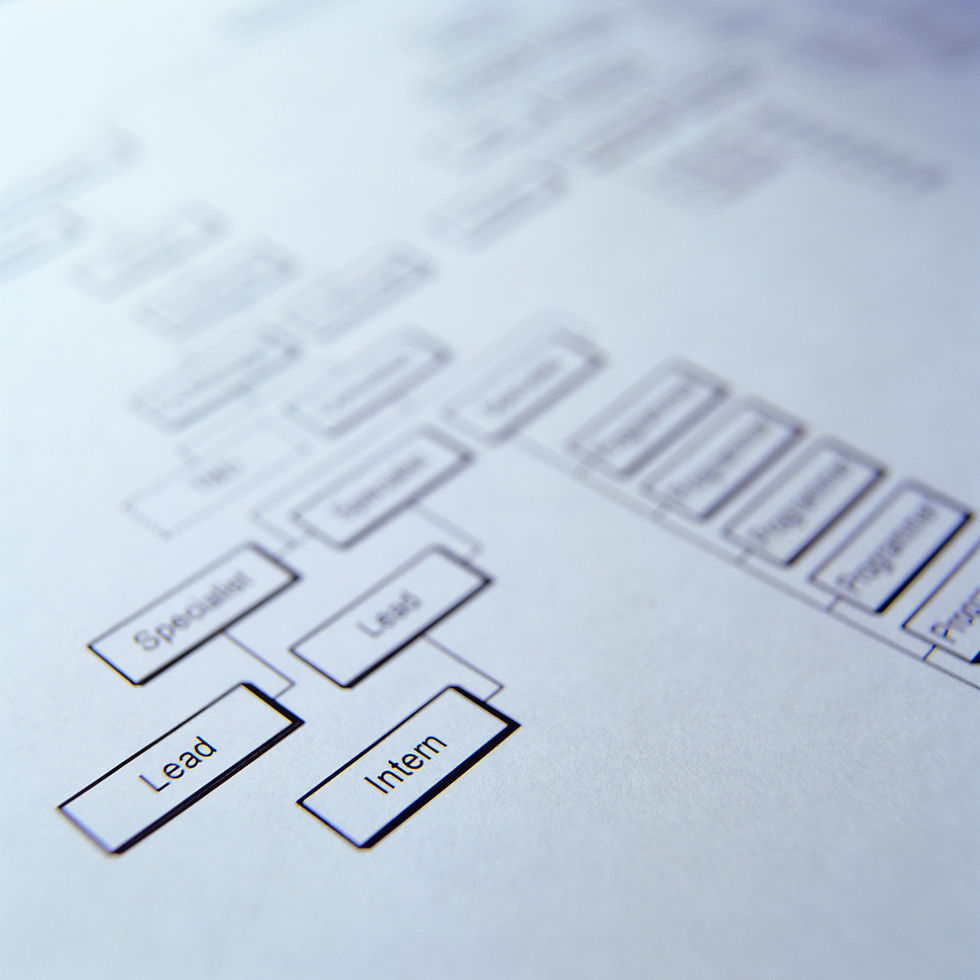Using Gantt Chart to Maximize Project Efficiency
- Administrator
- Nov 10, 2024
- 4 min read

The Gantt chart stands out as a crucial resource. This straightforward yet powerful visualization has completely transformed my project management approach, enabling project professionals to define timelines clearly, allocate resources wisely, and communicate progress effectively to stakeholders. This blog will share the benefits of the Gantt chart and illustrate how it helps achieve greater project efficiency and effectiveness.
What is a Gantt Chart?
A Gantt chart is a project management tool that visually represents a project’s schedule. It outlines all tasks or activities along a timeline, illustrating their start and end dates, duration, and overlapping nature. This clear visual makes it easy to grasp the overall timeline and progress of a project quickly.
Improved Project Planning
One of the standout advantages of using a Gantt chart is improved project planning. When launching a new project, I list all tasks alongside their estimated durations. Visualizing these tasks on a Gantt chart helps me uncover dependencies and potential bottlenecks. For example, if a design phase must conclude before development starts, I can ensure my team is prepared for a seamless transition.
Setting realistic deadlines based on my team’s workload is crucial as well. For instance, if my team is already working on two significant projects, I extend the deadlines for the new project to avoid overwhelming them. This careful planning pays off—research shows that effective project planning can increase success rates by up to 30 percent.
Enhanced Task Management
Once the project is in full swing, the Gantt chart becomes vital for task management. It allows me to break down larger tasks into smaller, manageable subtasks. For example, a marketing campaign can be divided into phases such as research, content creation, and distribution. Distributing these subtasks among team members fosters accountability and clarity about each person's responsibilities.
The real-time monitoring capabilities of the Gantt chart are invaluable. I can quickly spot tasks that are on schedule versus those lagging behind, enabling me to adjust our strategy promptly. According to studies, projects that utilize such real-time oversight can complete tasks 20 percent faster than those that do not.
Clear Communication
Effective communication is fundamental to project success. The Gantt chart acts as a universal language for all stakeholders, regardless of their familiarity with project management. During team meetings, I present the Gantt chart, offering a clear snapshot of our current status.
This clarity reduces misunderstandings and ensures everyone is aligned regarding timelines, responsibilities, and deliverables. As a result, the chances of miscommunication drop significantly, which can lead to a 50 percent decrease in issues arising from unclear expectations.
Resource Allocation
Using the Gantt chart also simplifies resource allocation. By visualizing tasks and deadlines, I can assess which resources—whether personnel, materials, or budget—are needed at different project stages. For instance, if I see our design team is heavily booked in month two, I might engage temporary freelancers to cover additional design work.
This foresight helps me avoid resource shortages and allows for better planning overall. Anticipating demand can improve resource utilization rates by as much as 25 percent, significantly enhancing overall project efficiency.
Flexibility and Adaptability
In a fast-paced project environment, being flexible and adaptable is essential. Projects often face unexpected changes due to stakeholder input or shifting market conditions. The Gantt chart allows me to make swift adjustments to task timelines and resource allocations. For example, when a client requests an earlier launch date for a product, I can quickly adjust other tasks to meet their needs without losing focus.
When changes arise, the Gantt chart is easily modifiable to reflect updated timelines, helping my team stay aligned with the new objectives. This adaptability is crucial for maintaining momentum—research indicates that adaptable teams are 70 percent more likely to achieve project goals.
Increased Accountability
Accountability is key to a successful team dynamic. The Gantt chart helps me assign specific tasks to team members, clarifying individual responsibilities and deadlines. For instance, if I assign the research phase of a project to one team member, it encourages them to take ownership of their part of the project.
The chart’s public nature also motivates team members to stay on track. With a clear visual of project progress, overdue tasks draw attention, prompting proactive behaviors and better collaboration.
Improved Risk Management
As progress continues, risks may threaten project execution. The Gantt chart effectively identifies potential risks early by highlighting overlapping tasks and critical paths. This visibility enables me to assess the potential impacts of delays and devise contingency strategies.
Proactive risk management can minimize setbacks. Studies show that teams employing such strategies can reduce project delays by an average of 45 percent, ultimately keeping the project on schedule.
Wrapping Up
The Gantt chart has proven itself as an essential tool in my project management toolkit. Its ability to improve project planning, enhance task management, and facilitate clear communication has allowed me to maximize efficiency and effectiveness.
By utilizing the Gantt chart, I can allocate resources strategically, adapt swiftly to changes, foster accountability within my team, and proactively manage risks. As I move forward in my project management career, I am confident that the Gantt chart will remain a cornerstone of my successful project delivery strategy.
If you haven’t considered it yet, I highly recommend exploring the Gantt chart for your next project. It may just provide the key to achieving a new level of project success.





